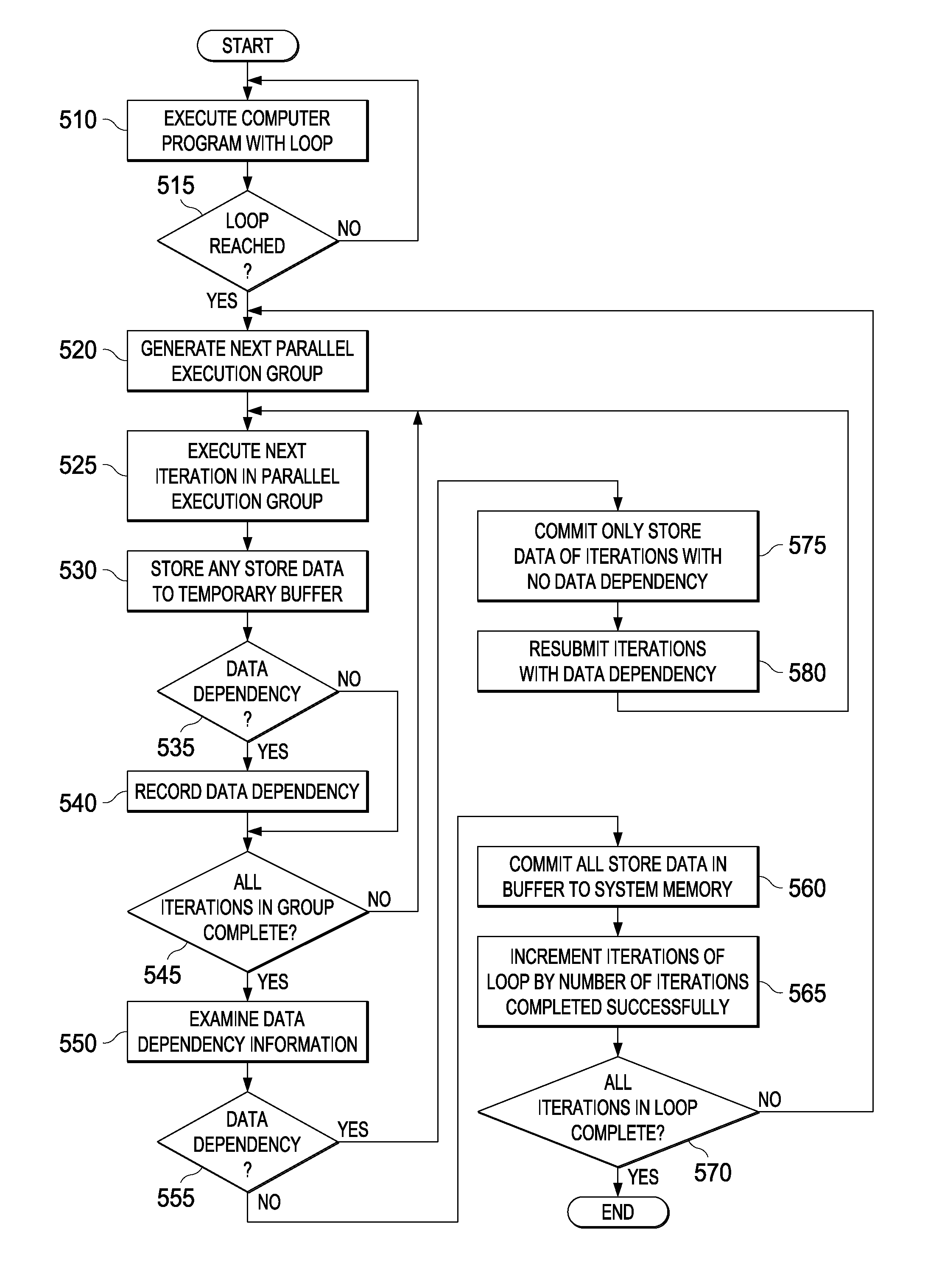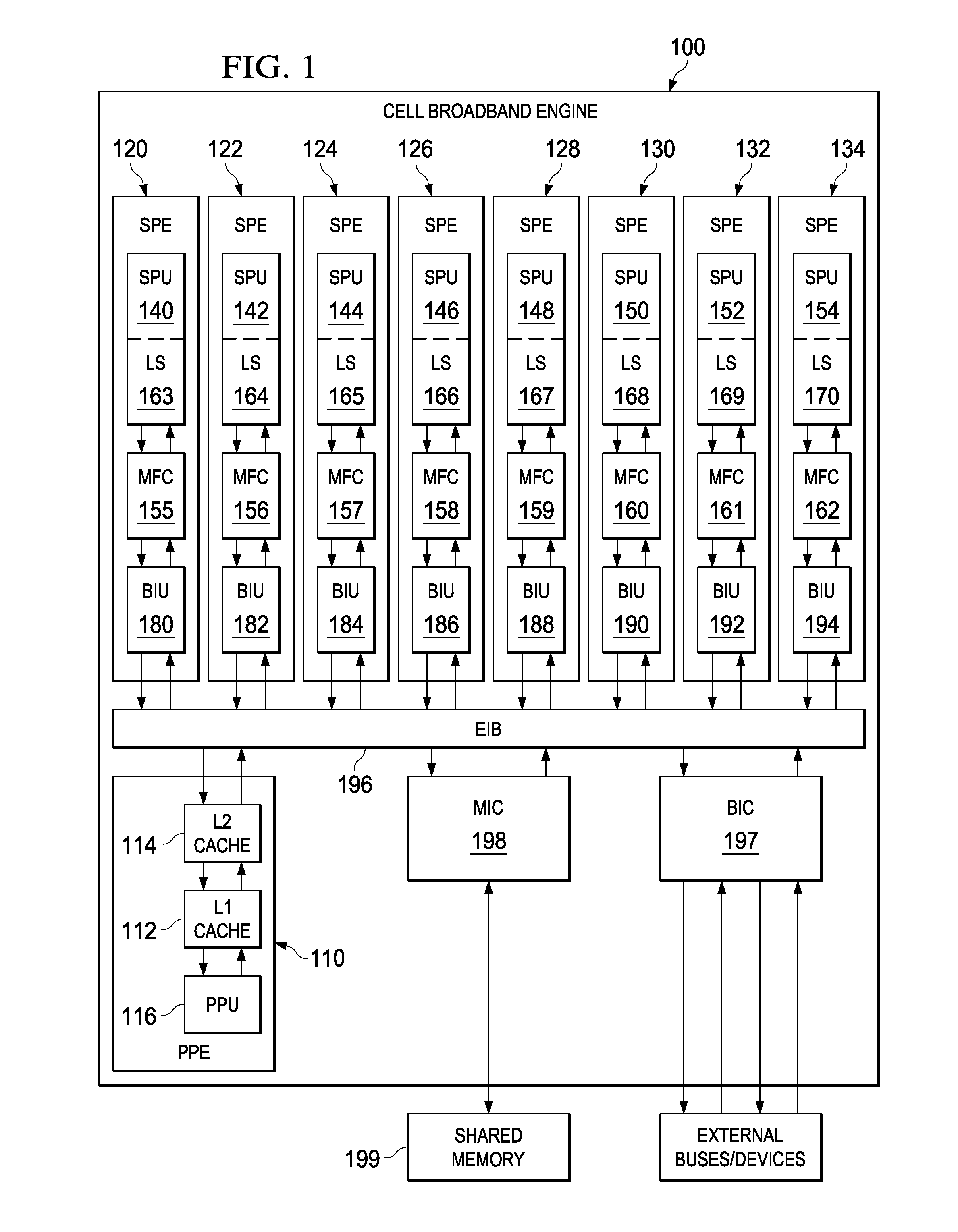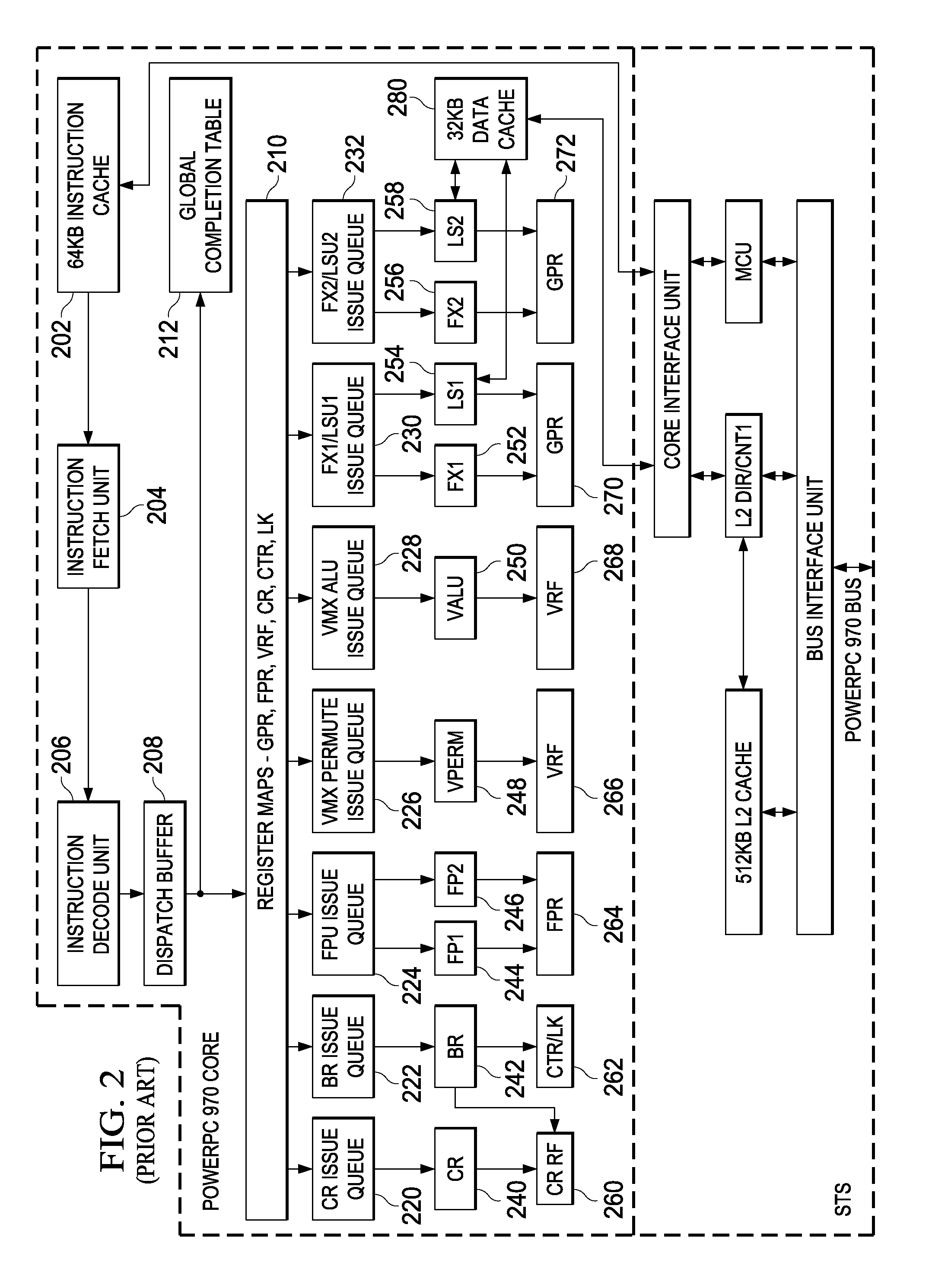Runtime Extraction of Data Parallelism
a data parallelism and runtime extraction technology, applied in the direction of program control, computation using denominational number representation, instruments, etc., can solve the problems of time-consuming and error-prone explicit vector programming, and the complexity of data parallelism extraction for compilers
- Summary
- Abstract
- Description
- Claims
- Application Information
AI Technical Summary
Benefits of technology
Problems solved by technology
Method used
Image
Examples
Embodiment Construction
. 6 is a flowchart outlining an operation of one illustrative embodiment in which a SIMD architecture having hardware mechanisms for detecting dependencies and masking off iterations of a loop for which dependencies have been identified is utilized; and
[0020]FIGS. 7A and 7B illustrate a flowchart of an example operation for performing runtime data parallel extraction of a loop in accordance with an embodiment in which multithreading is utilized.
DETAILED DESCRIPTION
[0021]The illustrative embodiments provide a mechanism for runtime extraction of data parallelism. The mechanisms of the illustrative embodiments allow an application developer and / or the compiler to assume that each loop iteration of a program loop is independent, i.e. there is no forward data dependence. For purposes of the following description, when data dependence is referred to herein, what is meant is forward data dependence, i.e. a loop, or iteration of a loop, executed later in programmatic order depending on data...
PUM
 Login to View More
Login to View More Abstract
Description
Claims
Application Information
 Login to View More
Login to View More - R&D
- Intellectual Property
- Life Sciences
- Materials
- Tech Scout
- Unparalleled Data Quality
- Higher Quality Content
- 60% Fewer Hallucinations
Browse by: Latest US Patents, China's latest patents, Technical Efficacy Thesaurus, Application Domain, Technology Topic, Popular Technical Reports.
© 2025 PatSnap. All rights reserved.Legal|Privacy policy|Modern Slavery Act Transparency Statement|Sitemap|About US| Contact US: help@patsnap.com



